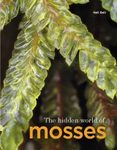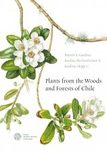Modern plant exploring in Vietnam: a new paradigm
By
charles
24 Sep 2021
Written for Paperback
Britain has a rich heritage of plant collecting, from the Tradescants, father and son, in the 1600s in Europe and North America, to Richard Baines in Northern Vietnam. Scotland alone had 120 collectors in the period 1700 to 1950, but how should we regard their exploits today, should we not be considering who benefited, and who lost in these exploits? George Forrest (1873-1932) alone brought back 31,000 specimens from the Himalayas, but by whose authority? Similarly, David Douglas brought us trees of great commercial benefit, and stature from North America, such as the Douglas Fir, while Sir Henry Wickham, allegedly ‘stole’ 70,000 rubber tree seeds from Brazil, brought them first to Kew Gardens, where 2,700 germinated, and then on to successful commercial production in Malaya, thereby breaking Brazil’s export monopoly. So who ‘owns’ the rights to botanical materials?
Plant Explorer by the Curator of Logan Botanic Garden, one of the Royal Botanic Garden Edinburgh's (RBGE) four gardens, is a record of Baines’ three journeys in the mountains of Northern Vietnam between 2014 and 2019. It is a lively and copiously illustrated account of the daily routines, delights, hazards, camaraderie under hardship, and excitement of plant exploring on tropical mountainsides, enduring heavy rain, precarious roads, and the frustrations of finding unusual trees but with no fruit or seed to be seen, particularly potentially new species of Magnolia and Rhododendrons, and others. Leaches, sleeping on hard floors and ascending very steep muddy slopes, and great shared meals, all feature in his very readable account of expeditions to mountains in the very north of Vietnam, close to the country’s boundary with China and, incidentally, an area apparently unvisited by Britain’s earlier collectors.
In modern Vietnam, expeditions don’t take place without consent, and these took place by invitation of, and in partnership with, the Institute of Ecology and Biological Resources (IEBR) in Hanoi, a state institution, a major contrast to how George Forest and others worked; much of the material collected remains with the IEBR. This paradigm shift in plant ‘collecting’, and recognition of ownership of genetic materials, was formalised at the UN Earth Summit in Rio de Janeiro in 1992, where the Convention on Biological Diversity (CBD) was opened for signature, and which the UK ratified in 1994. One facet of the CBD is the requirement to share fairly and equitably the benefits arising from genetic resources, so communities living around newly identified species should see benefits, where they are to be had. In this example, there is capacity building, joint discoveries and publications, DNA analyses to aid identification, and the creation of living collections in Vietnam of vulnerable species in the light of climate change and changes to land use, potentially available for reintroduction. These are the hallmarks of modern international botanical relations, and something the RBGE does extremely well. This book is a celebration of this 21st-century philosophy and gives new purpose to ‘plant collecting’, as well as being a good and enjoyable read.
5 of 5 found this helpful
-
Was this helpful to you? Yes No


































